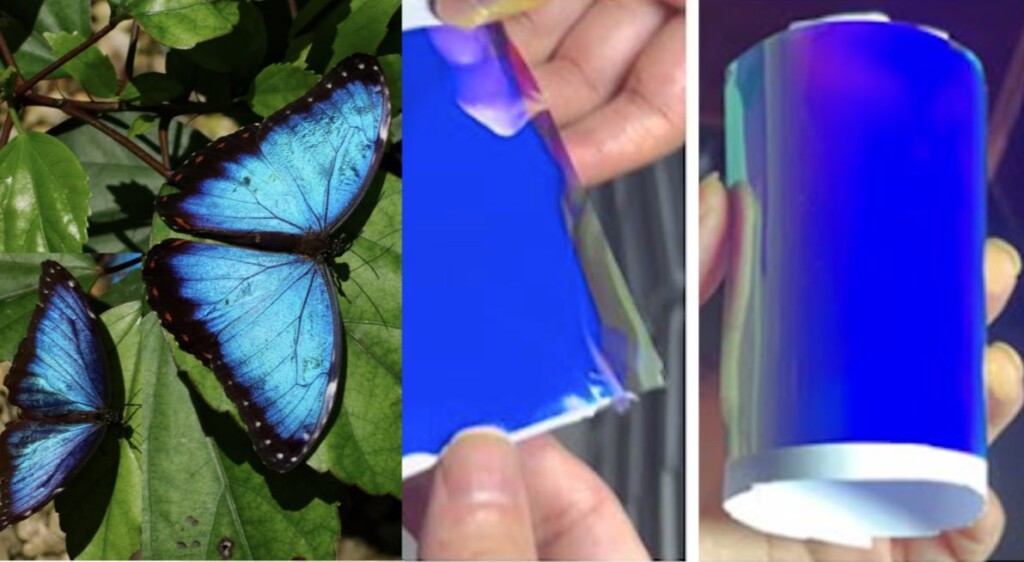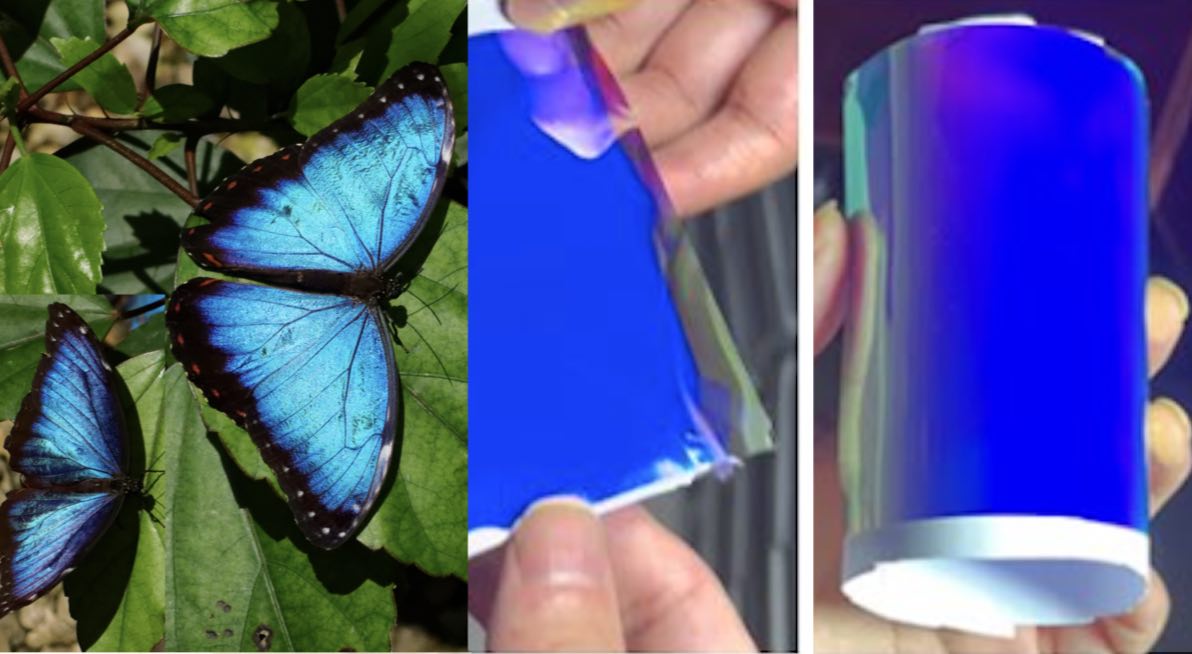
New nanofilms could significantly reduce the energy needed for cooling buildings or vehicles.
Just like white clothing feels cooler than other colors due to reflecting the sun instead of absorbing it, other colors, like blue or black, heat up when they absorb light. But new colored cooling films inspired from the nanostructures in butterfly wings can eliminate much of the heating effect, while still adding vibrant color.
The new films, which don’t absorb any light, could be used on the outside of buildings, vehicles, and equipment to reduce the energy needed for cooling.
“In buildings, large amounts of energy are used for cooling and ventilation, and running the air conditioner in electric cars can reduce the driving range by more than half,” said research team leader Guo Ping Wang from Shenzhen University in China. “Our cooling films could help advance energy sustainability and carbon neutrality.”
An article published in the journal Optica details that the films are lowering temperatures to about 2 °C below the ambient air. Furthermore, researchers also found that when left outside all day, the blue version of the films was approximately 50°F cooler (26℃ ) than traditional blue car paint.
If the films are used on buildings, this would represent a huge energy savings by lowering air conditioning use.
BUTTERFLY LOVERS: Great Monarch Migration Seems to Owe Success to White Spots on the Butterfly’s Wings
“With our new films, excellent cooling performance can be achieved, no matter the desired color, saturation or brightness,” said Wang. “They could even be used on textiles to create clothes of any color that are comfortable in hot temperatures.”
Enter the Morpho butterfly
A car with blue paint appears blue because it absorbs light that heats up the car. Morpho butterflies, however, produce their highly saturated blue color based on the nanostructure of their wings. The design of the cooling nanofilm mimics these structures to produce vibrant colors that don’t absorb light like traditional paint.
To create their Morpho-inspired nanofilms, the researchers placed a disordered material (rough frosted glass) under a multilayer material made of titanium dioxide and aluminum dioxide. They then placed this structure on a silver layer that reflects all light, thus preventing the absorption of solar radiation and the heating associated with that absorption.
The film’s color is determined by how components within its multilayered structure reflect light. To create blue, for example, the multilayer material is designed to reflect yellow light in a very narrow range of angles while the disordered structure diffuses the blue light across a broad area.
MONARCH NEWS: Monarchs Rebound Again–Beating Last Year’s Total, Proving Success is No Fluke
Although this type of passive photonic thermal management has been accomplished before, it has only been used with white or clear objects because it is difficult to maintain a wide viewing angle and high color saturation.
“Thanks to the layered structure we developed, high saturation and brightness can be achieved by optimizing the structure,” said Wang.
To test the new technology, the researchers created blue, yellow and colorless films, which they placed outdoors at Shenzhen University on roofs, cars, cloth, and cell phones. Using thermocouple sensors and infrared cameras to measure temperature, they found that the cooling films were more than about 27°F cooler (15℃) than the surfaces they were placed on in the winter and about 63°F (35 ℃) cooler in the summer.
MORE GOOD NEWS: Are There Any Environmentally-Friendly Air Conditioners Out There? (Some Good News)
The researchers point out that replacing the silver film with an aluminum film would make the films less expensive and manufacturable by a scalable fabrication method. Now that they have demonstrated the cooling and color performance of the films, the researchers plan to study and optimize other properties such as mechanical and chemical robustness.
FLY Some Energy Inspiration to Start-ups on Social Media…




















